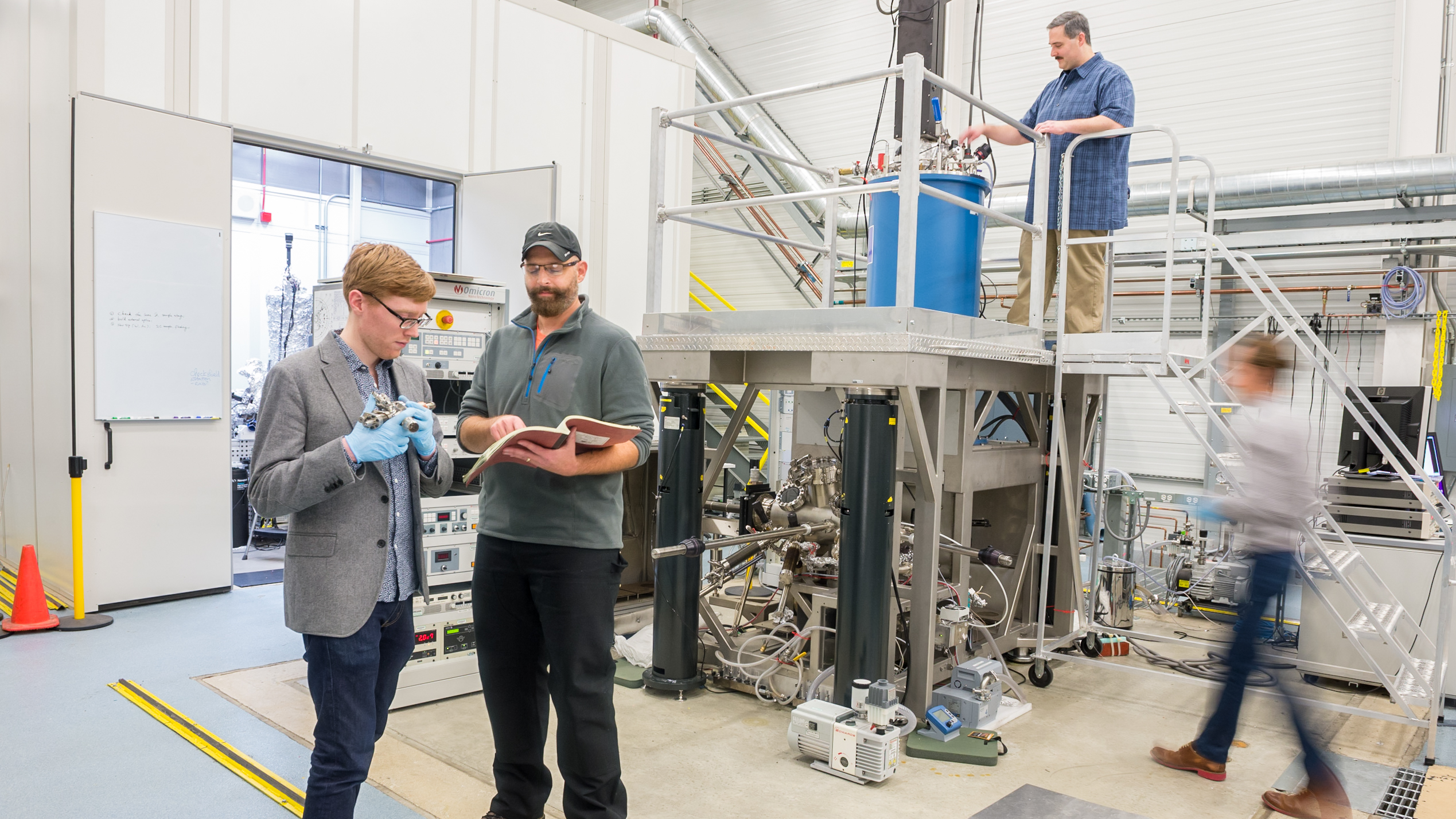
A team of scientists at the Center for Nanoscale Materials at Argonne National Laboratory, Northwestern University and Stony Brook University has for the first time, created a two-dimensional sheet of boron known as borophene. Borophene is an unusual material because it shows many metallic properties at the nanoscale even though three-dimensional, or bulk, boron is nonmetallic and semiconducting. Because borophene is both metallic and atomically thin, it holds promise for possible applications ranging from electronics to photovoltaics.
Although at least 16 bulk allotropes of boron are known, monolayers of borophene were unknown until now. One of borophene’s most unusual features consists of its atomic configuration at the nanoscale. While other two-dimensional materials appear smooth at the nanoscale, borophene looks like corrugated cardboard, buckling up and down depending on how the boron atoms bind to one another. The “ridges” of this cardboard-like structure result in anisotropy, where a material’s mechanical or electronic properties become directionally dependent.
Advanced simulation methods showed the formation of the corrugated surface wrinkles. Theoretical predictions of borophene’s characteristics reveal also that it likely has a higher tensile strength than any other known two-dimensional material. Tensile strength refers to the ability of a material to resist breakage when pulled apart.
Experimental measurements consisted of scanning tunneling microscopy with X-ray photoelectron spectroscopy and transmission electron microscopy to both obtain a view of the surface of the material and verify its atomic-scale thickness and chemical properties.
Unlike other experiments that use highly toxic gases in the production of nanoscale boron-based materials, this experiment involves non-toxic electron-beam evaporation, in which a boron source material is vaporized and condenses as a thin film on a silver substrate. Apparently growing on this substrate is key because the boron and silver do not react with each other.
A. J. Mannix et al., Science, 350, 1513 (2015)
